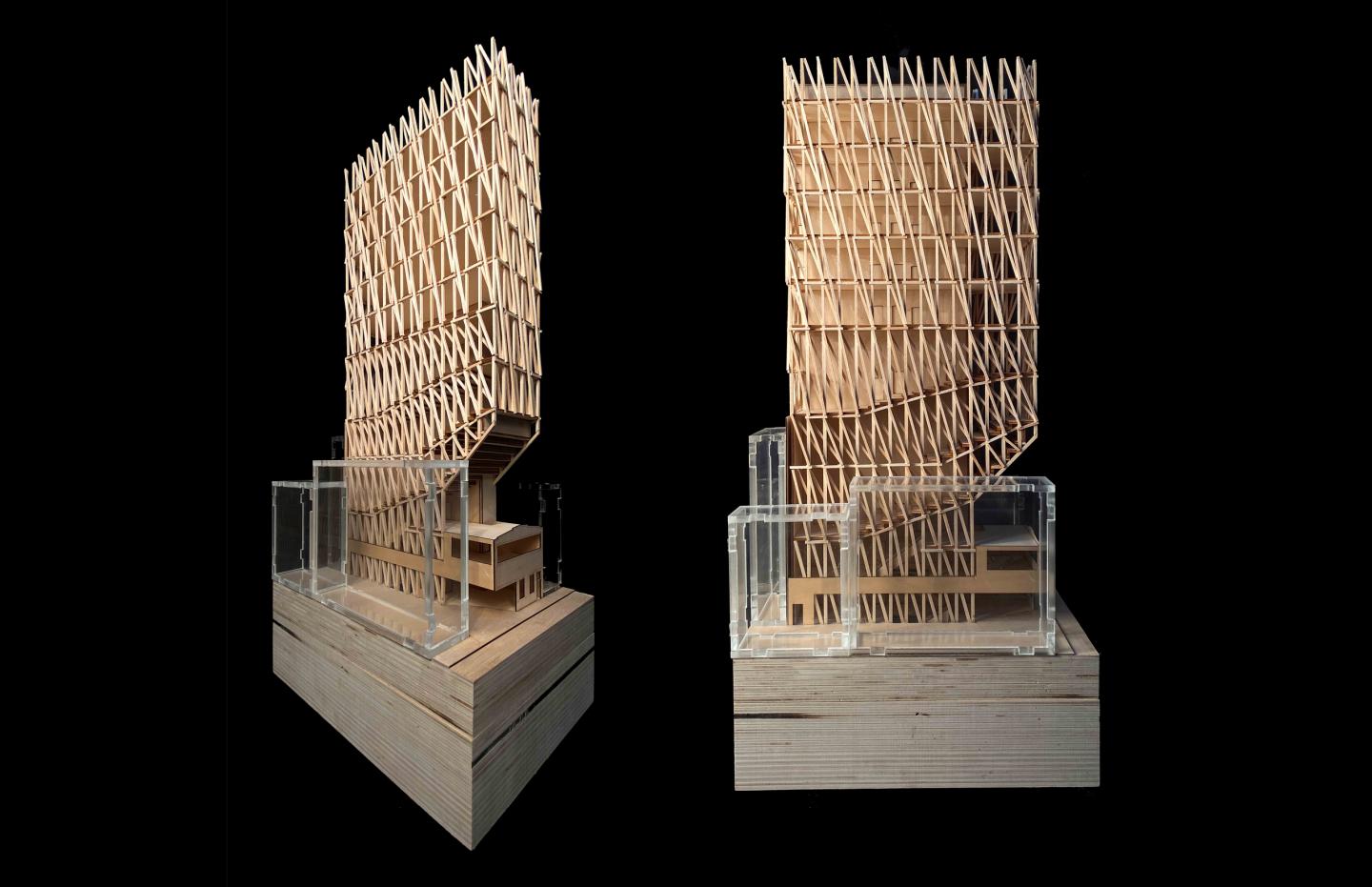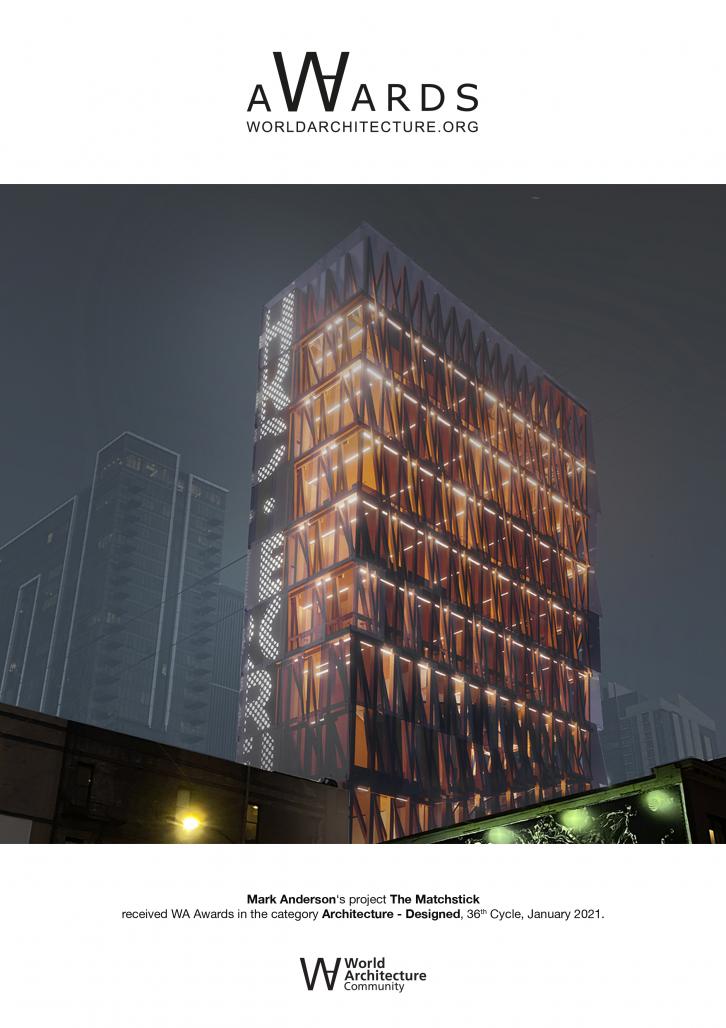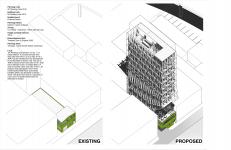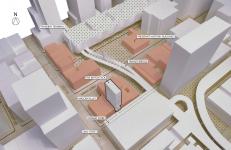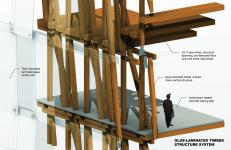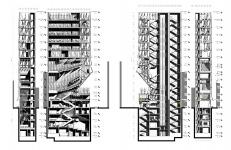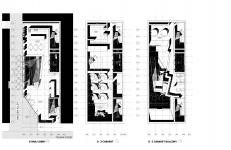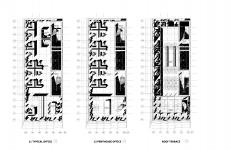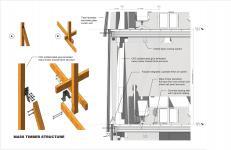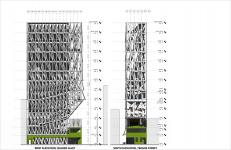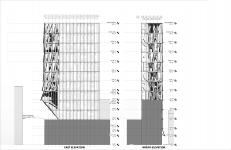At the intersection of narrow, uniquely San Francisco, mid-block alley-streets, amongst a chaotic mix of remaining low-rise buildings and dense new high rise construction, this small timber tower’splan and programming create a significant new public nexus and pedestrian throughway. This new mid-block alley programmingsupportsthe city’s planned network of new pedestrian alleys radiating outward from the Transbay Terminal into the surrounding SoMA District. Timber construction, combined with recent and upcoming building code advances allow this project to embrace environmentally positive, carbon-sequestering, fire-resistant wood construction technologies in a taller urban building.One hundred years ago, and well into the mid-twentieth century, the owner’s grandparents used the small building at the base of this project as their architectural lighting fabrication workshop. Her grandparents were members of a vibrant community of artists and craftspeople working closely with noted California architects of the time, including their close friend Julia Morgan, for whom they handcrafted fixtures and specialty components for many of her building projects. As the century progressed their work continued with friends such as the ceramicist Edith Heath and many other modern masters of California craft and architecture. Continuing the arts and crafts history of this community and building remains important to the owner, while her own career as a stage actor equally compels her interest in adding cultural programming and entertainment to her development plans. As one of just a few remaining historical remnants of the light industrial neighborhood that is rapidly transforming into San Francisco’s busiest urban transit and high-rise neighborhood, the city zoning, just as much as the owner, insists on retaining the original external presence of the building and its contextual integration with the string of historic buildings that are its street-level neighbors. At the same time, as an ongoing multi-generation asset and investment, the owner would like to develop the property upwards, in keeping with the city-encouraged high-density development of the
surrounding area, while at the same time building new opportunities for theater, music, arts and design within the neighborhood.Combining all these factors of family, urban contribution and technology advancement produces an unexpectedly tall, public-embracing, alley-corner night-life arts machine, taking the form of a glowing wooden lantern shooting up from the back of a humble old lantern workshop. We call it the Matchstick, but in fact, its heavy timber construction is highly fire-resistant. This point is significant in its regional context, as the building from bottom to top tickles thoughts of inescapable California resonance: mineshaft descent into womb-like western bedrock, seeking gold, fearing liquefaction; Climbingboldly upward into future dreams, defying gravity and earthly stutter; Bathing in exotic local forest wood, inhaling fierybreezes, a cocktail glass reflecting soot-orange sunset; Strolling alleyways at night, in a romantic city, still fearful of darker corners; Al fresco rooftop chilling within the reassuring embrace of fear-calming, low-carbon technologic architectural salvation; Dinner and a show, an urban stage rising from seductive alleyways, its glowing marquee crown surrounded by carpets of geometric street light rolling outward toward a shimmering bay rising fearsomely ever round us.
2019
0000
The building has a very small footprint, sitting on a 30’ wide 2400 square foot building site, and rises to a height of 180 feet, for a total of 31,500 square feet of interior floor area. The structural systemmakes use of important new carbon-positive building methods: CNC-prefabricated heavy timber construction using a glue-laminated (GLB) post and beam braced-frame structure; CNCprefabricated, glue laminated timber (dowel-laminated GLT) full-span floor panels with cast-in-place hydronically-heated concrete topping slabs; CNC-prefabricated, cross-laminated timber (CLT) shear walls, elevator and stair core, internal walls, soffits, ceilings and acoustical panels;Energy-savinghydronic in-floor heating and chilled beam cooling,with facade-integrated natural ventilation panels; Exterior cladding of lapped, frameless glazing panels, both clear and fritted, assembled to form a continuous sheathing of tiled, laminatedglass, inspired by ancient forms of stone-tiledarmor once used by Chineseand Japanese warriors, an image not unfamiliar, at least subliminally, in this cosmopolitan Pacific-rim city rich with important collections of Asian art . As a theater building, the shear core and other opaque walls and massive cantilevered soffit of thebuilding continue the same facade glazing pattern, but with translucent glass covering full -surface LED signage. At night, slowly scrolling marquee text announces the theater location and its offerings directly to the street below and to commuters passing by on overhead ramps.As the site enjoys a rare incidence of near-surface bedrock on San Francisco’s Rincon Hill, the design does not use more typical deep, drilledpiers, but instead the foundation is fully excavated to bedrock to build a deep, mat-slab concrete foundation, facilitating cost-effective below-grade program space. Below-grade foundation retaining walls consist of permanent, sheet pile steel shoring cross-braced with permanent interior heavy-timber structural bracing between walls, not unlike the timber shoring in a traditional mineshaft. Each of these construction systems is a technologically advanced adaptation of familiar construction
methods, taking advantage of new building code enhancements and pushing the envelope of typical methods in order to cost-effectively employ off-site fabrication efficiency and use of carbon-sequestering, renewable building materials paired with energy-efficient mechanicalsystems. With high local construction costs, skilled labor shortages and logistical complexities of the small-footprint, traffic-congested location, the off-site prefabrication, material and labor efficiencies of these construction methods are especially affordable and environmentally positive within the local context.
Mark Anderson, Peter Anderson, ZiangAo, with: Jieh Jia Tan, Ana Pérez González, Reem Makkawi, Gennifer Munoz, YafeiLi, Johnson Tang, Sofia Anastasiou.
The Matchstick by Mark Anderson in United States won the WA Award Cycle 36. Please find below the WA Award poster for this project.
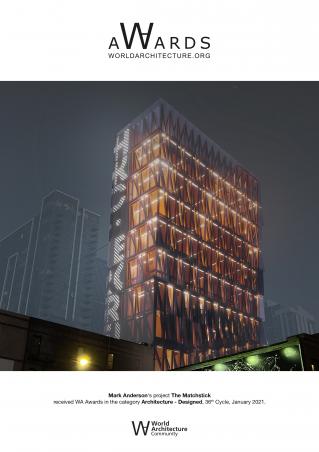
Downloaded 6 times.
Favorited 1 times
